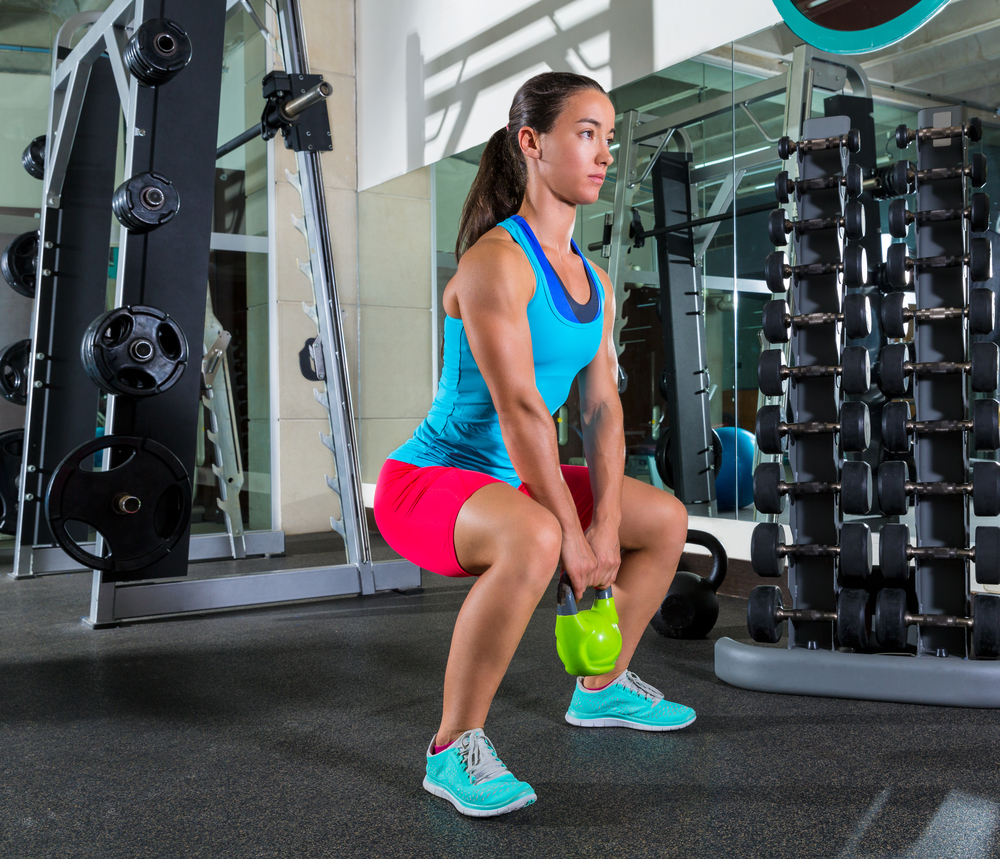Mar 3, 2017Starting with the Goblet
No matter what sport you coach, you probably have your athletes doing squats. Whether done in the weight room or on the field, squats are a great way to strengthen both the lower body and the core. But what happens when the athlete’s desire to get in reps starts to have a negative impact on proper form?
Maybe you’ve noticed an athlete’s knees pushing further over their toes than they should, or their back arching in an unhealthy way. Having proper form prevents injury while also ensuring the athlete is working the correct group of muscles. And there is a way to help athletes build their squat form while still reaping the maximum benefits that come with the exercise — the goblet squat.

A goblet squat uses the same technique as a regular squat, with the added variation of holding a kettlebell or dumbbell at your chest throughout the entirety of the movement. Pat Davidson, PhD, Director of Training Methodology at Peak Performance in New York City, explains that the extra weight helps to stabilize and align the shoulder blades, hips, and legs.
“The goblet squat grooves the right pattern into your brain, and the hope is that that pattern will carry over when you’re using a different (more form-challenging) squat variation, like the barbell back squat,” says Davidson.
But the benefits of the goblet squat don’t stop with form. They also increase the engagement of and build strength in the core. According to Brian Tabor in an article for Strong Made Simple, “Holding a dumbbell or kettlebell out in front shifts your center of gravity so that you’re forced (or at least strongly encouraged) to tighten up your trunk and abs to brace the load.” The extra core involvement that comes with adding a weight also helps to reduce stress on the spine, lessening the chance of injury.
While goblet squats can be a great way to help solidify form for regular squats, teaching your athletes how to do them correctly will ensure that they are receiving all of the benefits from this movement. Here are some instructions laid out in an article from BodyBuilding.com by NSCA certified personal trainer Sohee Lee:
- Hold the weight against your chest. With a kettlebell, grab it by the horns of the handle. With a dumbbell, hold it vertically with one of the heads between your palms and your thumbs pointing towards your chest.
- Stand with your feet a small amount further than shoulder-width and toes pointed slightly out.
- Sit back and down between the knees. Make sure to keep your chest up and back straight through the whole movement.
- Go as low as you can while keeping your feet flat on the floor.
- Brush your elbows down the inside of your legs and push lightly on your knees. This contact will tell you that you are at the bottom of your squat.
- Push yourself back up through your heels and stand tall at the top of the movement.
A good way to add this into your athletes’ workout regimen is to have it as part of their routine two to three times per week. There are many differing views on the amount of sets and reps that should be done with this exercise, but a good approach is to have your athletes do it until they can no longer hold the proper form. Davidson suggests doing three to five sets of six to twelve reps.
As for the amount of weight needed for this exercise, Lee uses the policy that you should start light and then add on. “I’d much rather see you bang out a set, decide it’s far too easy, and then go up 10 pounds, rather than have an inflated ego lead to injury,” she said. In his article for Strong Made Simple, Tabor suggests a similar method. Once someone has good form with a certain weight, he will increase it in increments for sets of five repetitions until form begins to fail. This weight is what he then uses as a baseline for future workouts.
There are many variations to this exercise. If you are looking to challenge your athletes further or extend the benefits of this exercise, check out this article written by performance director Andy Haley for instructions on how to add a curl and a press to the goblet squat.


